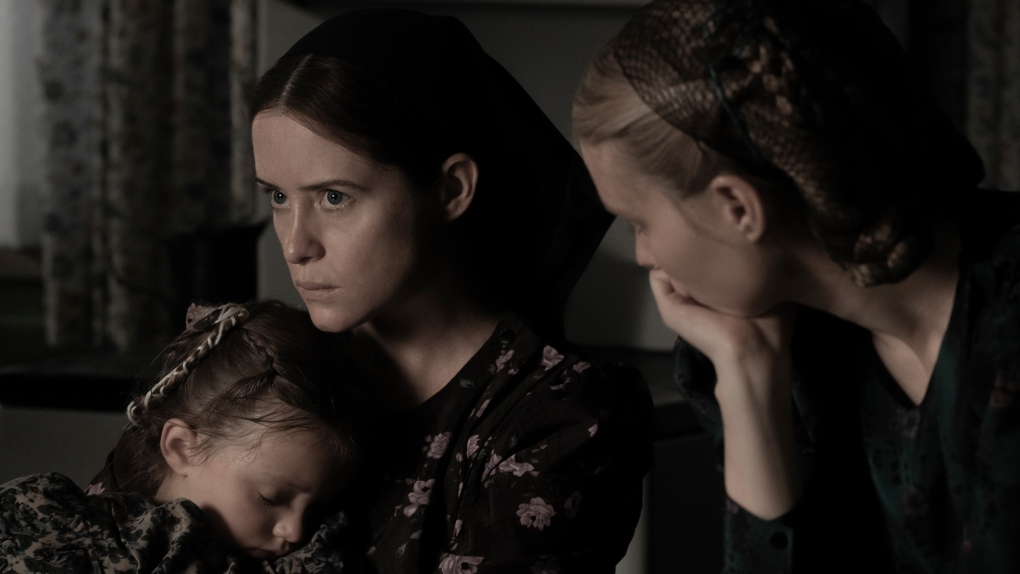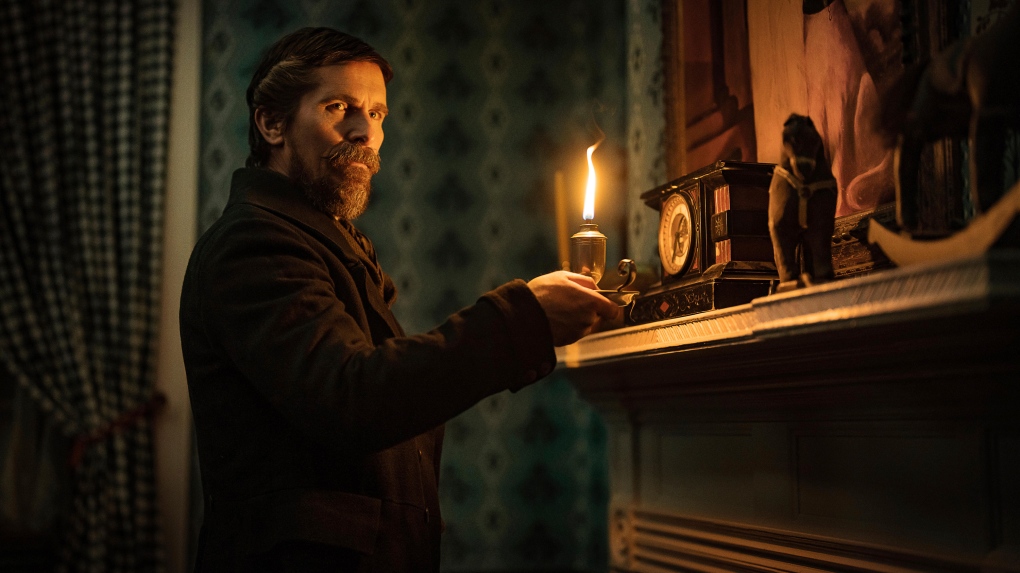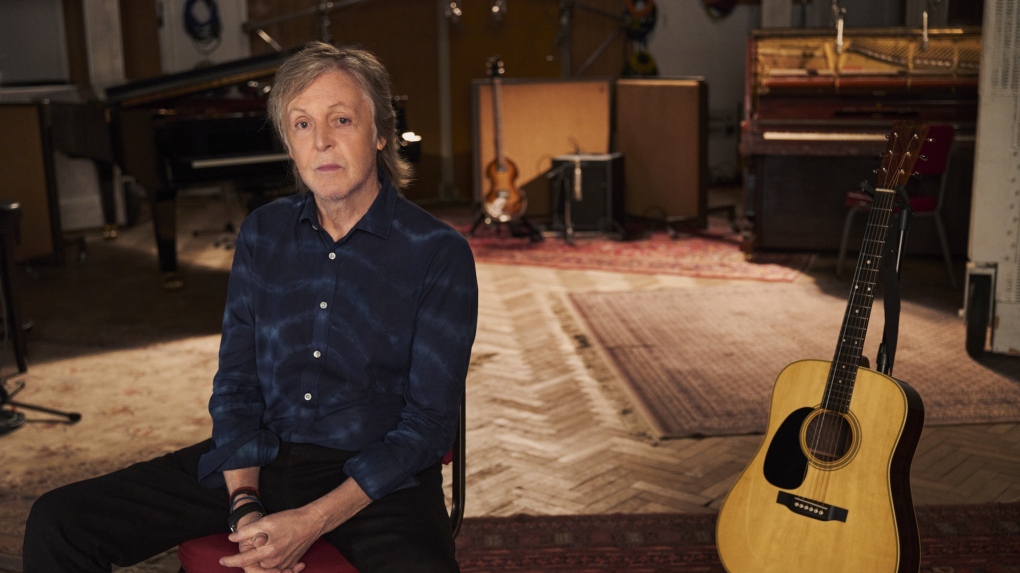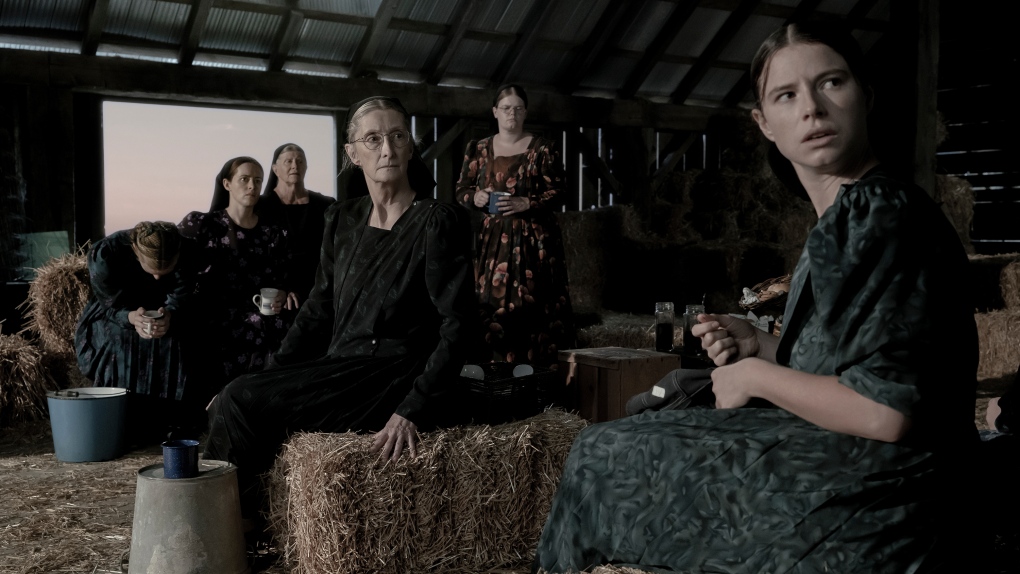Audience note: This review contains mention of sexual violence and abuse.
WOMEN TALKING: 4 STARS
 This image released by United Artists shows Emily Mitchell, from left, Claire Foy and Rooney Mara in a scene from "Women Talking." (Michael Gibson/Orion - United Artists Releasing via AP)
This image released by United Artists shows Emily Mitchell, from left, Claire Foy and Rooney Mara in a scene from "Women Talking." (Michael Gibson/Orion - United Artists Releasing via AP)
“Women Talking,” directed by Sarah Polley and now playing in theatres, is a very specific portrayal of the aftermath of sexual abuse, with a universal message of standing up for one’s self, family and community.
Based on a 2018 Miriam Toews novel of the same name, in the film, the women of a tightly knit religious colony gather in the wake of terrible, on-going sexual abuse by the men. For years the commune’s husbands and sons have tranquilized the women with cow medication, raped them regardless of age, and then convinced the victims the abuse was the work of Satan or their “wild imaginations.”
“We know that we’ve not imagined these attacks,” says Salome (Claire Foy), the mother of an abused child. “We know that we are bruised, and infected, and pregnant, and terrified.”
In the wake of the allegations, the men, sequestered in the city for their safe keeping, have given the women two days to forgive them. If they don’t, they threaten to expel from the community women which means they will be denied entry into the Kingdom of Heaven.
“Surely,” says mother-to-be Ona (Rooney Mara), “there must be something worth living for in this life. Not only the next.”
Now, gathered in the hayloft of one of their barns, the women, including the rancorous Mariche (Jessie Buckley) and community matriarch Agata (Judith Ivey), debate their three options: do nothing in retaliation, stay and fight, or leave.
The spirited deliberations give way to a variety of points of view. “Is forgiveness that’s forced upon us true forgiveness?” wonders Mariche. “We have been preyed upon like animals,” says Greta (Sheila McCarthy). “Maybe we should respond like animals.” Others wonder what life would have been like if none of this ever happened.
Set in 2010, timely social issues of justice, autonomy and unanimity among victims collide in a movie that captures the extended conversations, highlighting their harrowing nature, while slyly mixing in some unexpected humour.
Polley, who wrote as well as directed, ensures that each of the characters bring dynamic notions to their performances, and aren’t just placeholders representing opposing ideas for the sake of drama. The set-up, based on true events in a religious community in Boliva, offers a fascinating window into a fight for survival and the opportunity to examine the situation from a variety of thoughtful viewpoints.
A film, largely set in one room, whose action is verbal, not physical, could have been dry or, at the least, feel stage bound but Polley’s deep dive into the human condition crackles with life. She has carefully calibrated every line, every pause, to create forward momentum as the life-changing deliberations move toward their conclusion.
“Women Talking” is elegant filmmaking buoyed by emotional intelligence and powerhouse performances and is sure to be Oscar-bound.
THE PALE BLUE EYE: 3 ½ STARS
 This image released by Netflix shows Christian Bale as Augustus Landor in a scene from "The Pale Blue Eye." (Scott Garfield/Netflix via AP)
This image released by Netflix shows Christian Bale as Augustus Landor in a scene from "The Pale Blue Eye." (Scott Garfield/Netflix via AP)
Adapted from Louis Bayard’s 2003 novel of the same name, “The Pale Blue Eye,” a sombre new Christian Bale murder mystery now streaming on Netflix, begins with a grisly murder in a society that favours discretion.
Set at West Point Military Academy in upstate New York, circa 1830, the story kicks off on a chilly day, an atmospheric note that informs the tone of the film. A cadet is found dead, hanging from a tree on the grounds. What appears to be a case of a young man taking his own life, becomes suspicious when it is discovered his heart has been removed post mortem.
Hoping to avoid a public scandal, West Point enlists Augustus Landor (Christian Bale), a local detective still smarting from the loss of his only daughter, to quietly solve the case. Hindered by the academy’s strict code of silence, Landor gets a break when meets an eccentric young cadet at a local tavern. “I am an artist,” he flamboyantly declares, “I have no nation.” The man, Edgar Allen Poe (Harry Melling), is a poet and truth seeker whose ambitions lay in the written word, not the stuffy traditions of the military.
“Poe,” Landor says, “I need you to discreetly infiltrate the cadets.”
A fictional story, “The Pale Blue Eye” inserts Poe, credited with inventing the American detective story, into this tale of intrigue. The poet, sans his famous moustache, did attend West Point, and after two years of service, attained the rank of Sergeant Major for Artillery, but that is where any similarity to reality ends.
Poe, as played by Melling, is arguably the film’s most entertaining character, the only one cut loose from the restraint that casts a pall over the proceedings like a shroud. Bale raises his voice a few times, breaking his character’s unshakable, flinty self-possession, but it is Melling, and his ostentatious demeanor that brings the, as he says, “hot thrashing flurry,” to break free of the movie’s gothic shackles.
Writer, director Scott Cooper sprinkles engaging supporting performances throughout. As the wife of the very proper Dr. Marquis (Toby Jones), Gillian Anderson’s low rumbling voice gives her character a malevolent edge, and it’s a treat to see Robert Duvall as occult expert Jean-Pepe, even if his role is under-written.
“The Pale Blue Eye” is a handsomely mounted, pulpy murder mystery, with some fine performances, but its methodical pace and bleak nature clip its wings, and don’t allow it to make like the E.A.P.’s Raven and take flight.
IF THESE WALLS COULD SING: 3 STARS
 Sir Paul McCartney, in Studio 2 Abbey Road. (Mary McCartney via Disney)
Sir Paul McCartney, in Studio 2 Abbey Road. (Mary McCartney via Disney)
Liam Gallagher calls it “a national treasure.” “Music seeps from the walls,” said Elton John. Film, composer John Williams called it the “mother of the music that was birthed there.”
The place is London’s Abbey Road Studios, one of the most famous recording studios in the world, and the subject of “If These Walls Could Sing,” a new documentary/hagiography now streaming on Disney+, directed by Mary McCartney, eldest child of Paul McCartney and Linda Eastman.
From playing home to everyone from cellist Pablo Casals and Cliff Richard to Pink Floyd and Kate Bush to Fela Kuti and all the above-mentioned stars to, of course, the Beatles and so many other 20th and 21st century luminaries, the studio has made an indelible impact on recording arts and popular culture.
Broken into sections defined by era, McCartney presents an engaging nuts and bolts history of the studio, from its grand opening in 1931 to early rock and roll, to the heady days of Beatlemania and onwards to the young artists who create new music there, while soaking up the vibes of everyone who came before. The mix of archival footage, music and talking heads from the musicians who recorded there, paints an affectionate and informative portrait of the people and the place.
The stories are fun. Did you know Jimmy Page of Led Zeppelin played acoustic guitar on Shirley Bassey’s “Goldfinger” in Abbey Road’s Studio Two? That Linda Eastman brought a pony named Jet, who would later inspire the famous Wings’ song, to the studio? That Elton John, then still called Reginald Dwight, played piano on The Hollies’ “He Ain’t Heavy, He’s My Brother”?
There are more tales from the recording studio, by-and-large, told by those who made the music, including Kanye West in a segment obviously shot some time ago, but the movie lacks real depth. When Paul McCartney is asked what makes Abbey Road so special, he says, “It’s a great studio. All the microphones work. It sounds silly but you go to some studios…” It’s not the most illuminating answer, but if you want details, John Williams goes deeper later in the film, describing the studio’s “nice face” and “nice sound.”
“It’s a gift to music,” he says. “I have to tell you.”
“If These Walls Could Sing” is nostalgia dolled up in a pretty package, with all the rough edges shorn off. Rock docs probably shouldn’t be this respectful, still, as music movies go, this one mines rich, entertaining territor











































